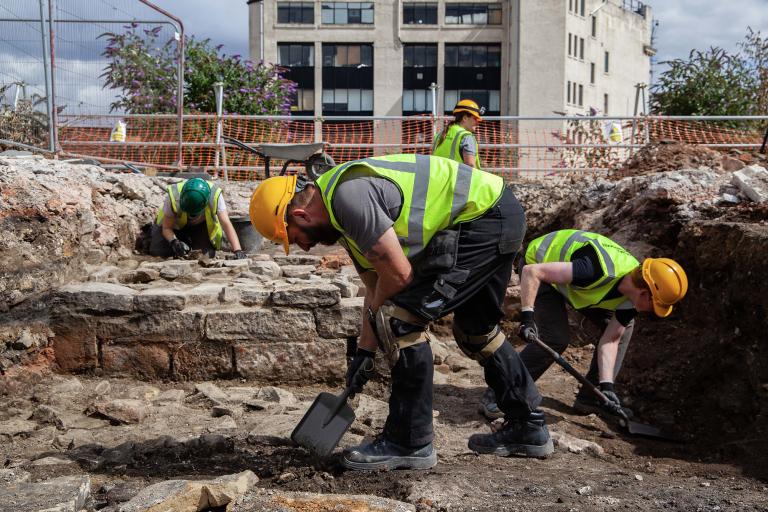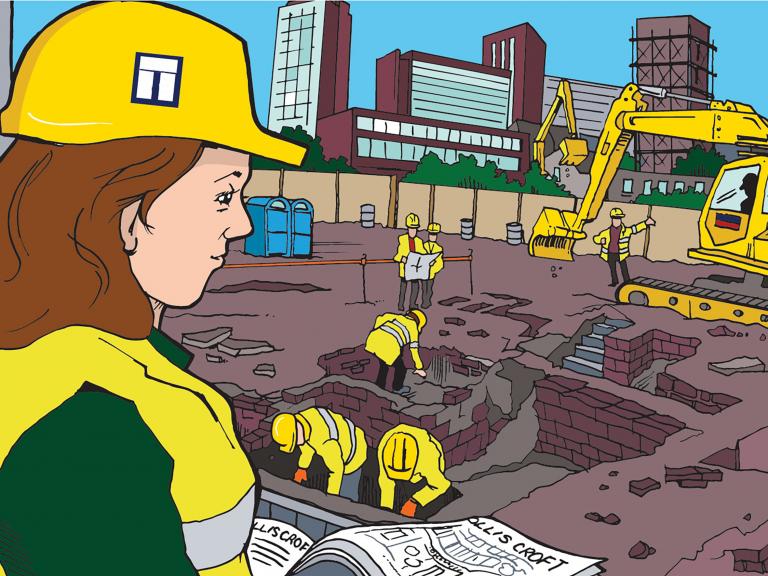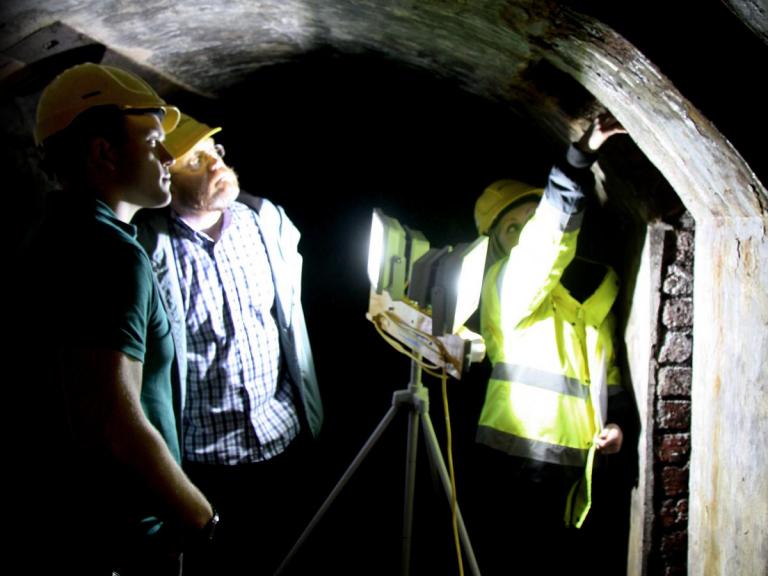53.380909530685, -1.4682973874143
Our Place
We are very fortunate to be located in a city with a vast archaeological legacy, of which its rich industrial heritage is perhaps best known. Steelmaking dominated Sheffield’s development and flourished due to the fast, powerful rivers that converge in the city. Waterwheels situated on the rivers initially provided the power for processes such as grinding and hammering. Although steam engines generally came to be used for this purpose, the steel industry had become well established and persists in Sheffield to this day.
Steelmaking
Innovation in steelmaking techniques placed Sheffield at the forefront of the industry. The cementation process for transforming iron into steel was invented in Germany or Czechia but took hold in Sheffield in the 17th century. Although coal and ganister (a type of sandstone used to construct furnaces) were available locally, the Sheffield steel industry was reliant on imports of Swedish iron and much of the success of Sheffield as a steelmaking centre relied on the high quality of European imports. A surviving example of a cementation furnace can be seen at Doncaster Street. Further examples have been excavated by Wessex Archaeology (eg, at Hollis Croft) and also by ARCUS (Archaeological Research and Consultancy at the University of Sheffield). ARCUS made extensive contributions to our understanding of Sheffield’s heritage, mainly in the 1990s and 2000s, including excavation of the earliest cementation furnace yet found, dating to the late 18th century, at Riverside Exchange, and published by Wessex Archaeology.
Huntsman and Bessemer processes
The next major advance in steelmaking was the crucible process, invented in Sheffield by Benjamin Huntsman. The distinctive rectangular chimneys of crucible furnaces can be seen across the city and examples have been excavated at Hoyle Street. Taken together, the cementation and crucible processes were known internationally as the ‘Sheffield processes’ and were at the forefront of technology in their day.
After initial failures elsewhere, Henry Bessemer brought his Bessemer process to Sheffield in the mid-19th century which revolutionised the production of steel. An example of a Bessemer converter is preserved outside Kelham Island Museum. Innovations in steelmaking continued in Sheffield into the 20th century with the invention of stainless steel by Harry Brearley working for Brown Firth at their research laboratories.
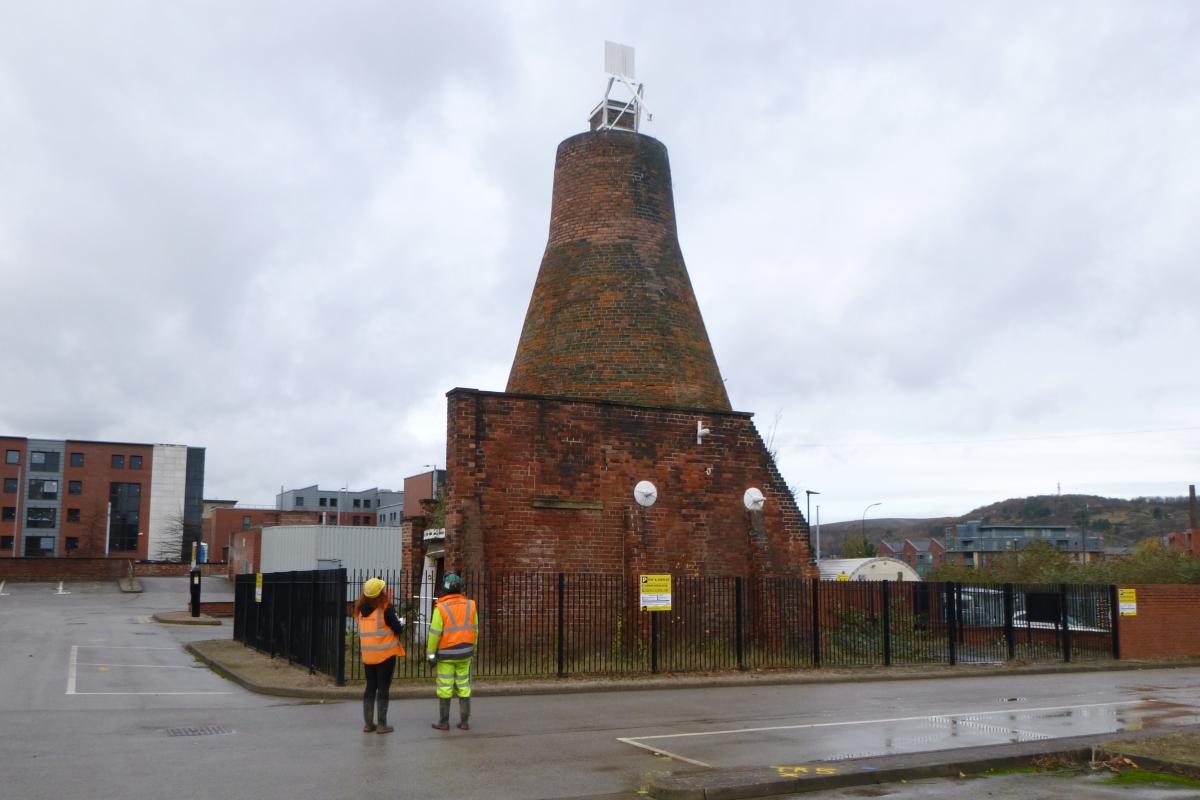
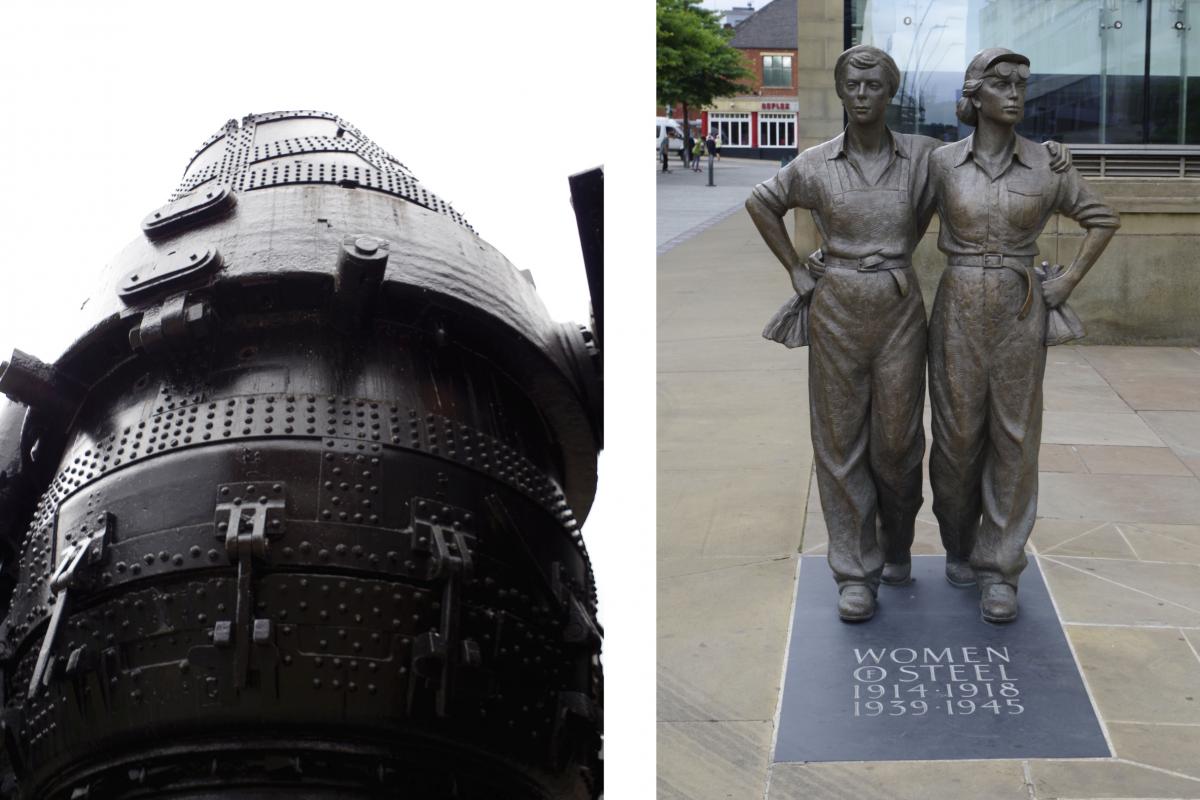
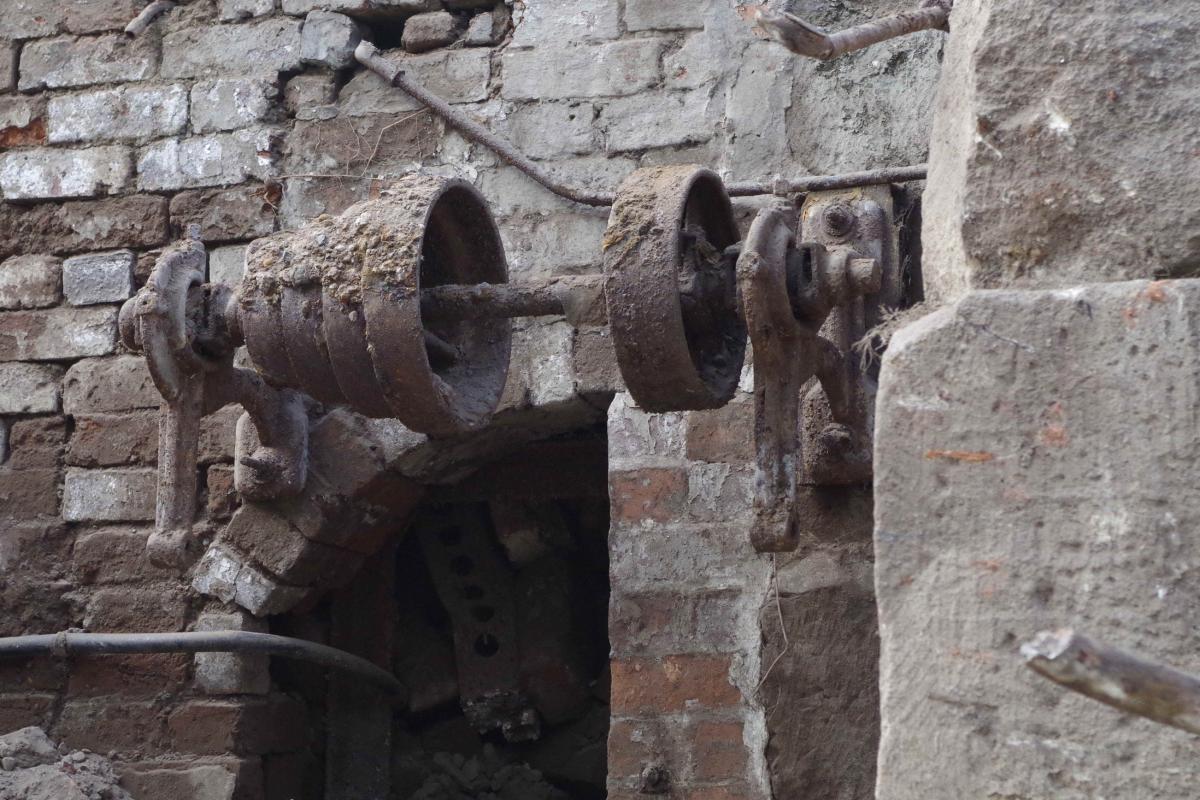
What was all this steel used for?
Sheffield is still known as a centre of cutlery production and huge numbers of workers, both men and women (the so-called ‘buffer girls’) were required to work in the cutlery industry. The ongoing importance of women in industry is celebrated by a statue outside City Hall. Part of a cutlery works was recently excavated by Wessex Archaeology during the creation of the Porter Brook pocket park. In Sheffield, work was commonly undertaken by ‘little mesters’, independent craftsmen who rented small rooms with power supplied by a belt system. Little mesters’ works were typically arranged around courtyards, and some are still used by independent craftsmen and artists, eg, Portland Works, where Wessex Archaeology wrote a conservation plan in support of a successful community campaign to save the works.
Sheffield industry was not limited to knives, with a wide variety of tools from files to scythes also manufactured (eg, at Abbeydale Industrial Hamlet). Wessex Archaeology’s office in Sheffield occupies part of a former shovel works. The Don Valley became host to heavy industry, exemplified today by the ongoing work of Forgemasters. Here rolling mills (such as Staybrite Works recorded by Wessex Archaeology) and drop hammers produced everything from steel frames for buildings to battleship armour.
Workers at the time were housed in tiny back-to-back houses or terraces. Toilet facilities were situated communally in yards and there were a large number of public houses, typically on street corners. These domestic arrangements have been extensively excavated, such as at Dun Street, and also at Hollis Croft and Titanic Works, where the close proximity of houses, pubs and furnaces can be appreciated.
Another side of Sheffield – its early beginnings
Although Sheffield bloomed into the major city we know today during the industrial revolution, the early history of Sheffield is also intriguing. Prehistoric discoveries in Sheffield are rare but include a Bronze Age boat recovered from the River Don (now on display in Weston Park Museum), isolated finds of flint tools and bronze axes, and Wincobank hillfort, an Iron Age site overlooking the corridor that carries the modern motorway and railway north from Meadowhall. The importance of this route is underlined by the nearby Templeborough site, a former Roman fort and settlement near the modern Magna Science Adventure Centre just over the border in Rotherham.
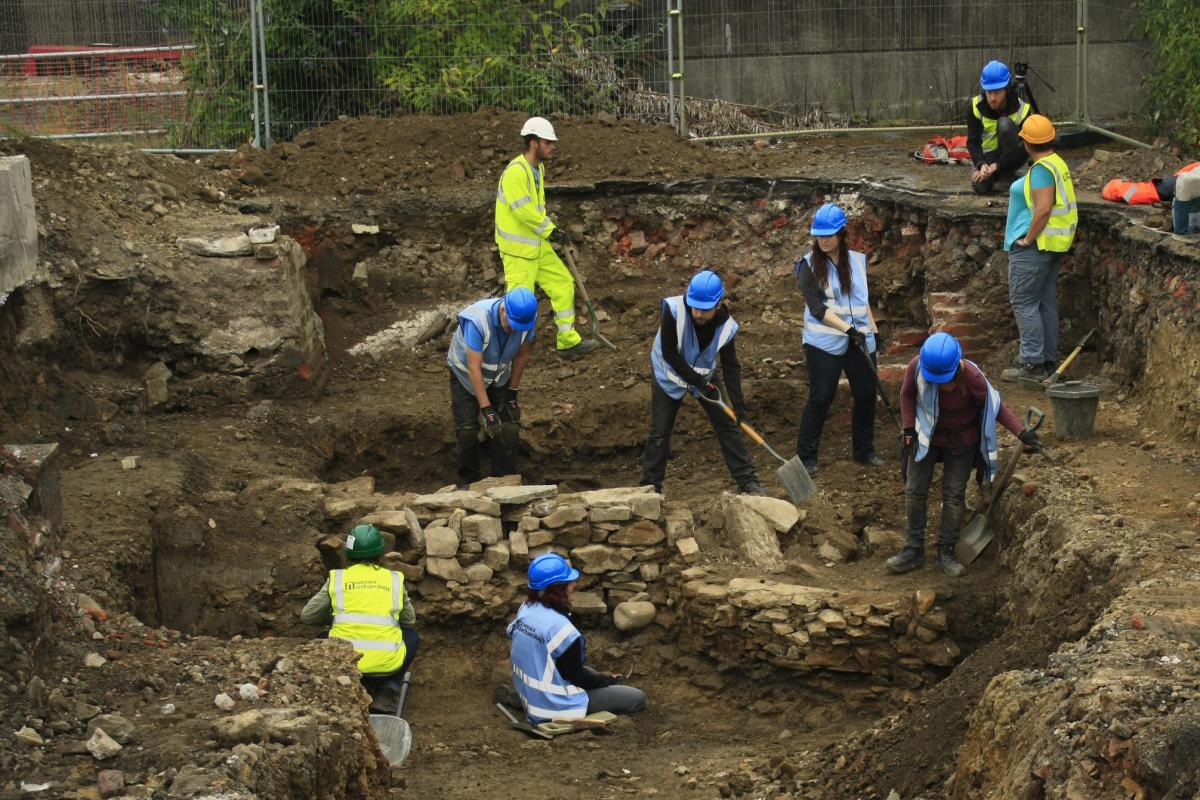
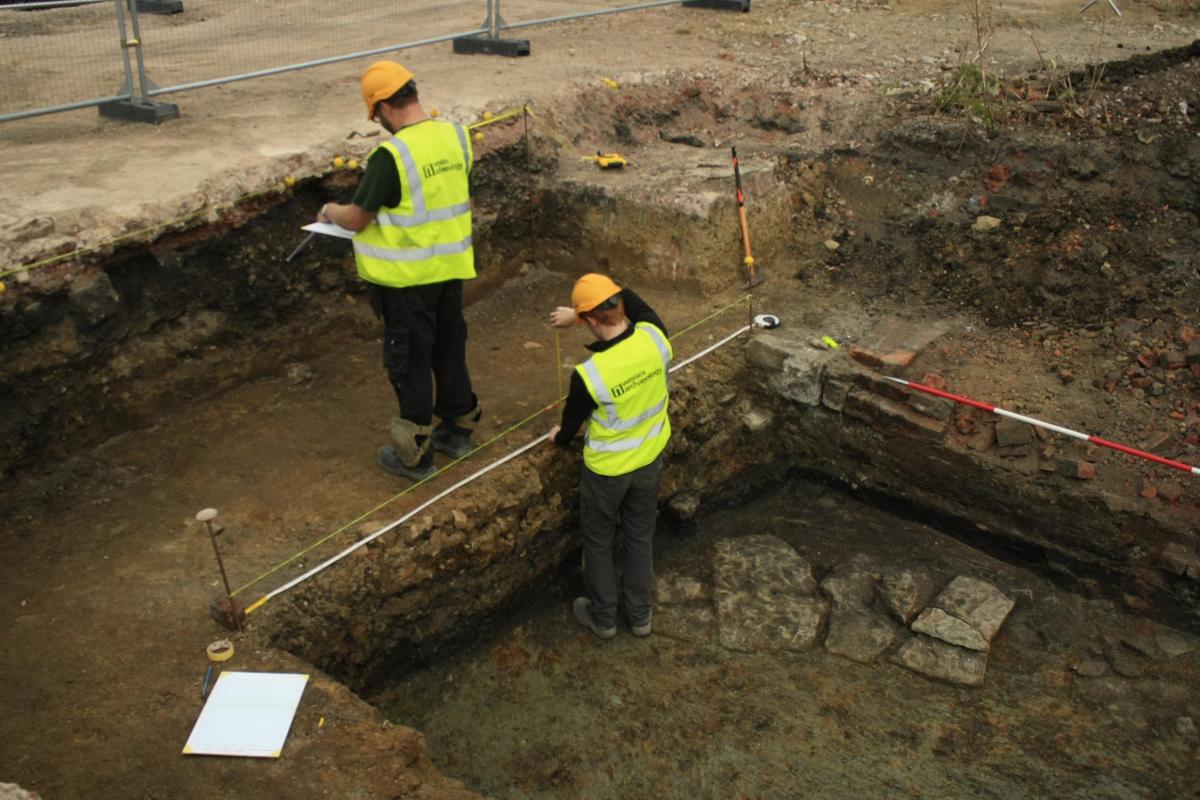
Medieval Sheffield
In medieval times the settlement of Sheffield was small and focused on the large castle situated at the confluence of the rivers Don and Sheaf. The castle was probably established following the Norman Conquest and developed throughout the medieval period until it was slighted during the Civil War. By the 19th century almost no trace of the castle survived above ground. The great prehistorian A. Leslie Armstrong undertook the first excavations at the castle site for the Society of Antiquaries and the Hunter Archaeological Society in the 1920s. The Hunter Society is the local archaeological society and is named after the antiquarian Joseph Hunter who wrote about Sheffield’s history in the early 19th century. Further excavations at the castle site were undertaken by Leslie H. Butcher between 1958 and 1972 but were never written up. Wessex Archaeology has just completed fieldwork on the castle site, where excavation of 11 trial trenches revealed evidence of the castle including part of the moat, a courtyard surface, a stone foundation and most intriguingly redeposited clays that may have been part of a motte or other fortification. Rich environmental samples, medieval pottery and other artefacts including a copper ear spoon for removing ear wax were recovered.
Other historic sites in Sheffield include Bishops’ House, the cathedral (formerly a more modest parish church) and Manor Lodge, one of the sites (along with the castle) where the Earl of Shrewsbury shouldered the massive expense of imprisoning Mary Queen of Scots.
Wessex Archaeology has a thriving office situated next to the river Sheaf in Heeley, Sheffield and undertakes regular archaeological investigations, both in the city and elsewhere in the region.
